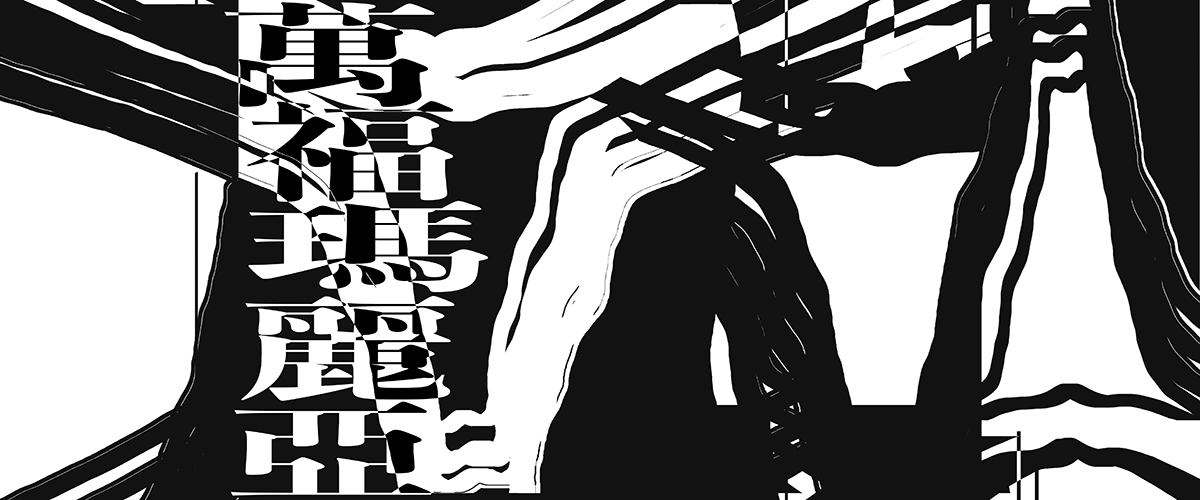

| HOME |
 |
WORKS |
 |
CV |
 |
 NEWS NEWS |




 |
|
 |
|
| Cover concept of the artist's book "Ave Maria" |
|
|
Tsou Yung-Shan reads from her yet unpublished Berlin novel
„Ave Maria“, translated by Johannes Fiederling (homevideo in German
language). |
|
| |
|
| manuscript: Keiner liebt mich heißt
bitte liebt mich (Nobody loves me means please love me) Form and Concept: The novel contains several short stories that reflect the facets of the life in Berlin and Taipei. The short stories can complement each other and relate to each other. In this work I plan to deal with the following topics: What is the home? What significance does the role of the mother include? What are the wanderers looking for in their so-called new life? How is the intervening and how is it expressed? How does each one handle it? And how does their gaze relate to each other? I would like to work on them on the linguistic level with playful language experiments: With the influence of German language and my understanding of Chinese calligraphy, I try to develop a pictorial form language from the Chinese rhetorical convention : The precision of my expression reflects the integration of Chinese and German. The Chinese character imagery is also a cornerstone of my writing. In this work I will continue to discover my pictorial narration. Some observational moments about the urban landscape will be the content of this work, to present the city and its inhabitants in a varying and vivid way. In addition to designating urban landscape, I try to narratively link the floating state of each figure with its surroundings. The figures carry common surnames such as Meyer or Schmidt. I have developed this naming principle in my writing to emphasize the anonymity in the urban area through the confusing and quasi-repeating names, and thus to develop language games. One of the main themes in my works is "in-between-ness". It describes how one perceives and behaves in a multicultural environment — especially in a big city. The "non-places" in between, such as airports, railway stations or public facilities are so called meeting places, where you usually do not know each other. In my recent novels, The Waiting Room and A Traveler's Guide to Ride-sharing, I've explored these environments. Each individual dissolves in the crowd, and is influenced by the functional but impersonal environment which This makes everone look faceless and anonymous, and begins to wonder how to handle it. I am interested in unfolding the nuance of the in-between-ness and showing the special face of the invisible triviality. When I deal with the "non-places", I also discover the gaze of others exists everywhere in public. It changes in various forms: It can be an inconspicuous eye contact, an observation through a camera lens of a vacationer or a targeted search of a monitoring device. Under such a view one can perceive each other differently over time. I would like to continue to work on this phenomenon in my work and to delve into the in-between-ness at the same time. |
|
| 「非
場所」裡的正常與不正常,以及「我們」的視線 基於自身經驗,我特別關注在當前全球化的生活形態之下,人的流動遷徙、複數種語言在內外作用所產生的新動態,從而如何影響我們對世界的理解,而這些複雜情 境可能會是什麼面貌,以及個人如何面對自己愈趨多元的身分認同。這種處於多元情境下的人性心靈——我稱之為「介於之間」(in-between-ness),觀察它、挖掘它便構成了我的創作基調。這種心靈是流動的,也與各種移動相互交錯。 移動是我們生活中很基本的環節,在我們這個當代尤其如此,小範圍的通勤移動乃至出差調任,甚或離境移居,移動的瑣碎時段加起來很可能比在所抵達的定點停留 的時間還要長。在這些移動的段落中,我們在功能不一的地方穿梭,例如捷運站、火車站、機場、運輸工具、超級市場、連鎖旅館、各類公家機關——這些由法國人 類學家馬克・歐傑稱作「非場所」(或譯為「非地方」)的地點具有強烈的功能,卻同等地缺乏個性;看似很親切,但是都難以深究。而我們一向深受空間的影響, 因所處空間性質的殊異與不連貫,令我們的心理狀態也有斷續、無所適從的現象。觀察並描寫這類當代城市地景特徵是我構築當代人類內在心象的手法之一。 在我先前的小說《等候室》和《鐵道共乘旅遊手冊》裡,「非場所」是一直出現的場景,但是把重點放在處於「非場所」中的人的內在與外在活動。在《萬福瑪麗 亞》裡,我想把出發點設在場所/非場所本身,描寫這些場所/非場所的演進或調換,單一的地方裡是如何混合了異質文化,而那些改變又是如何逼近、包圍了我 們。 同時,我亦嘗試在《萬福瑪麗亞》中呈現人們如何面對身處於多元文化情境的自己,無論是在陌生的國度,或者在理應熟悉的地方。 此外,在處理小說中的日常情節時,尤其在〈請照看眷顧我們〉這個篇章中,我特別省思著「觀看」這件事,這也是我在《萬福瑪麗亞》想要表現的另一層主題。由 於我本身亦從事視覺創作,我便思考能否從《萬福瑪麗亞》的抽象主題出發,建立跨文學與視覺藝術領域的串聯形式。根據這個想法,我在2018年七月到十月於 臺北市立美術館展出的《跨域讀寫:藝術中的圖書生態學》聯展中進行了以下實驗:我展出了一組以監控設備組成的裝置作品〈我們的凝視〉,探問我們在被監控的 公共場域中的視覺活動,如何意識「公共」與「私人」間的邊界(是否這中間還有明確邊界),以及我們對於「被觀看」的自覺或不自覺。展出期間我不時會在現場 觀察並蒐集觀者面對監視鏡頭的反應,作為我在寫作《萬福瑪麗亞》的另類素材。 |
|
 |
|




 |
HOME |
 |
WORKS |
 |
CV
|
 |
NEWS |